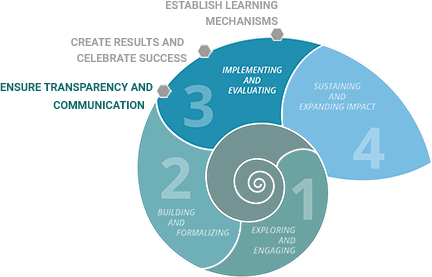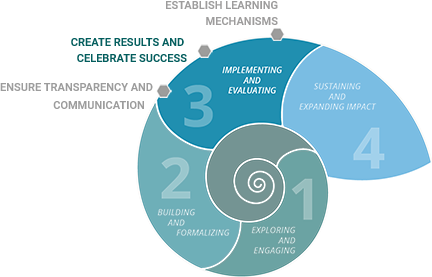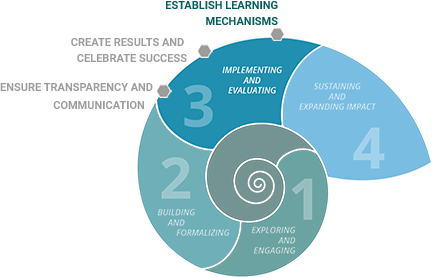
Once the implementation of the collaboration initiative begins in phase 3, continuous communication of progress is of utmost importance, making the process as transparent as possible for all stakeholders. In order to maintain trust and commitment to cooperative delivery continuous relationship management and attention to goal clarity are important. Not only the communication to stakeholders, but also between stakeholders needs to be fostered through regular meetings and reviews.

During Phase 3, it is essential to highlight progress and achievements of the collaboration initiative. ‘Prototypes’ – examples of future broader results – must be created early, and they must be visible to stakeholders and non-participating actors alike. It often makes sense to initially focus on easy-to-reach results. But this does not necessarily mean that one should lose sight of larger, more important goals. Stakeholders stay engaged when they can readily relate to joint successes, and can thus overcome difficult situations together.

While the Container (core group) should have established a culture of learning right from the start in Phase 1, it is important to establish learning and innovation mechanisms in Phase 3 that include all stakeholders. This can refer to monitoring and evaluation procedures, but needs to go beyond. What is needed is a culture of mutual learning, and creative exchange about innovative approaches and workable solutions. This is the time to introduce process monitoring as a learning mechanism and let as many stakeholders as possible participate in maintaining the quality of the collaboration pattern.
